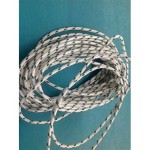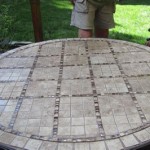Laying Flagstone Patio Sand: A Comprehensive Guide to a Stable Foundation
Creating a beautiful and durable flagstone patio requires careful attention to each step of the installation process, and laying the right type of sand is crucial for achieving a stable and long-lasting surface. This guide will provide you with all the essential information you need to confidently lay flagstone patio sand and ensure the integrity of your patio for years to come.
Choosing the Right Sand
The most important aspect of laying flagstone patio sand is to choose the appropriate type. Not all sand is created equal, and using the wrong type can compromise the stability of your patio. The best type of sand for flagstone patios is polymeric sand, which is a mixture of sand and a polymer resin. Polymeric sand hardens when it is wet, creating a strong bond between the flagstones and preventing the sand from washing away or shifting.
Preparing the Base
Before laying the flagstone patio sand, it is essential to prepare the base properly. The base should be level and compacted to prevent the flagstones from sinking or settling. If the base is not properly prepared, the flagstones can shift and crack, compromising the overall stability and appearance of your patio.
Laying the Sand
Once the base is prepared, you can start laying the flagstone patio sand. The sand should be spread evenly over the base, ensuring that there are no gaps or depressions. The thickness of the sand layer will depend on the size and weight of the flagstones you are using. For typical flagstones, a 1- to 1.5-inch thick layer of sand is sufficient.
Compacting the Sand
After the sand has been laid, it must be compacted to create a stable foundation for your flagstones. You can use a hand tamper or a plate compactor to compact the sand. Be sure to compact the sand evenly and thoroughly, avoiding any areas that may be softer or less compacted.
Setting the Flagstones
With the sand compacted, you can now set your flagstones. Gently place each flagstone on the sand base and adjust them until they are level. Use a rubber mallet to tap the flagstones into place, ensuring that they are firmly seated in the sand. As you set the flagstones, be sure to leave a small gap (about 1/8 inch) between each stone to allow for expansion and contraction.
Sweeping and Sealing
Once all of the flagstones have been set, sweep the patio to remove any remaining sand or debris. You can then seal the sand to prevent it from washing away or shifting. Polymeric sand is self-sealing, but if you are using regular sand, you can apply a commercial sand sealer to protect it.
Conclusion
Laying flagstone patio sand is a relatively straightforward process that can be completed in a weekend. By following the steps outlined in this guide, you can ensure a stable and long-lasting foundation for your flagstone patio. Enjoy your beautiful and durable outdoor space for years to come!

Flagstone Installation With Enviro Bond Sand

How To Lay Flagstone Installation Guide Landscaping Network

How To Build A Flagstone Patio In One Day Merrypad

Laying And Ng Stones For A Flagstone Walkway
:strip_icc()/101427270-f2fbe431e7174e86945a62e011e4d361.jpg?strip=all)
How To Install A Flagstone Patio Our Step By Guide

How To Lay Flagstone Installation Guide Landscaping Network

Discount Decorative Rock Laying Flagstone Boulder Placement

What Is The Best Material To Put Between Flagstone Firstfruits Landscaping

How To Build A Flagstone Patio In One Day Merrypad

Polymeric Sand Or Stone Dust Flagstone Joints How To








